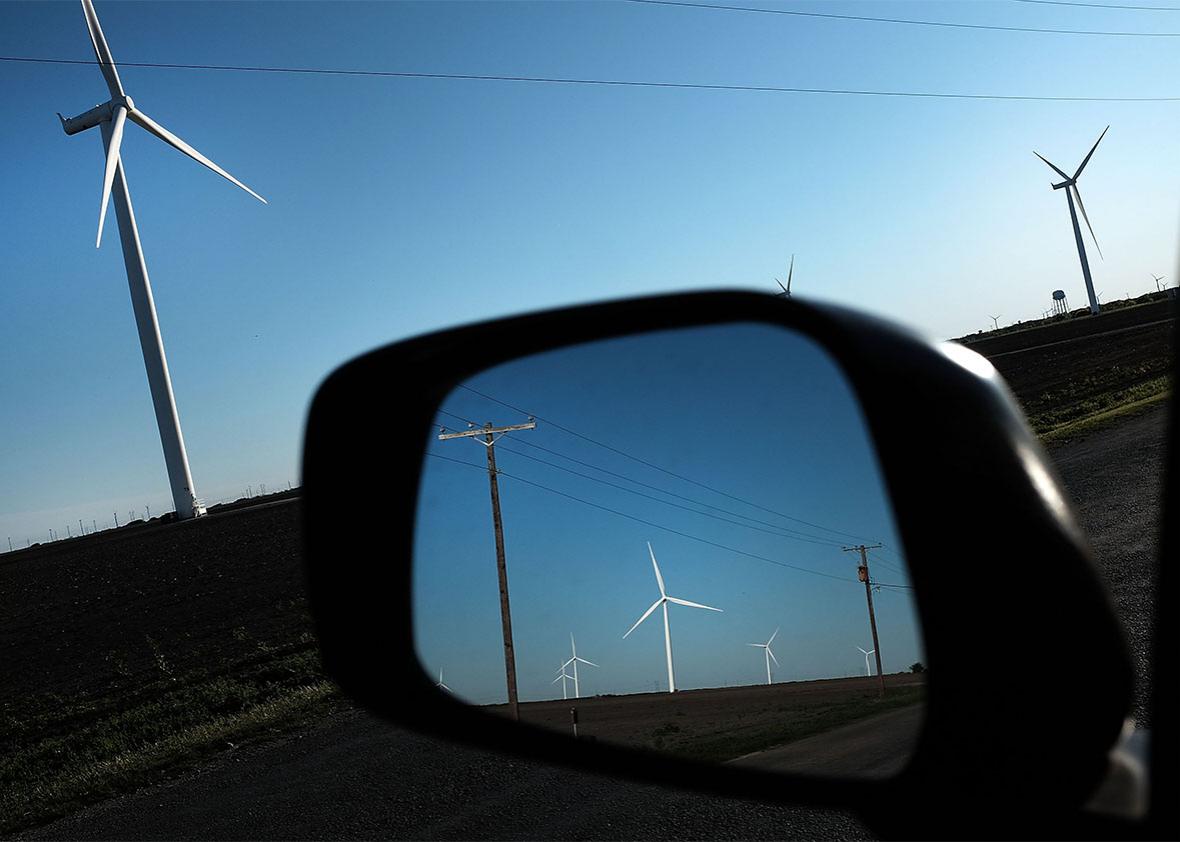A fascinating story came up about the price of wind energy in Texas going negative.
At first I thought that it might be subtle, like the wind farm paying to use the grid as a dump load when the power was not really needed.
But no, it is instead an illustration of the weird effects that can sometimes be seen when government action skews a market.
Necessary preconditions:
1. It is not easy (if possible at all) for a Texas energy producer to wheel the power to sell it to another state.
2. Prices in Texas for uncertain sources like wind energy are bought and sold on the spot market, not in advance.
3. The grid operator is required to buy from the lowest bidder.
4. If more wind power is available than is needed to supplement the baseline energy production within the system, not all producers will get to sell.
The effect: One night the price of electricity on the spot market went negative, to about 8 cents per kWh paid by the producer to the grid operator!
The reason:
5. The expenses of the wind farm are mostly fixed costs to be amortized, so it can pay to sell energy for less than it costs to produce.
6. More importantly, the Federal government pays a production bonus of 2.3 cents per kWh to a wind energy producer as long as the power produced actually goes into the grid.
So to get the 2.3 cent bonus, some producers were willing to pay the state grid .8 cents to take their power rather than someone else's that night.
At first I thought that it might be subtle, like the wind farm paying to use the grid as a dump load when the power was not really needed.
But no, it is instead an illustration of the weird effects that can sometimes be seen when government action skews a market.
Necessary preconditions:
1. It is not easy (if possible at all) for a Texas energy producer to wheel the power to sell it to another state.
2. Prices in Texas for uncertain sources like wind energy are bought and sold on the spot market, not in advance.
3. The grid operator is required to buy from the lowest bidder.
4. If more wind power is available than is needed to supplement the baseline energy production within the system, not all producers will get to sell.
The effect: One night the price of electricity on the spot market went negative, to about 8 cents per kWh paid by the producer to the grid operator!
The reason:
5. The expenses of the wind farm are mostly fixed costs to be amortized, so it can pay to sell energy for less than it costs to produce.
6. More importantly, the Federal government pays a production bonus of 2.3 cents per kWh to a wind energy producer as long as the power produced actually goes into the grid.
So to get the 2.3 cent bonus, some producers were willing to pay the state grid .8 cents to take their power rather than someone else's that night.

Comment